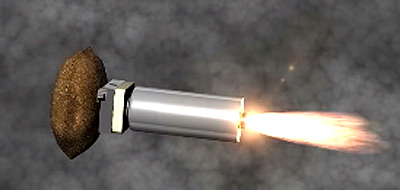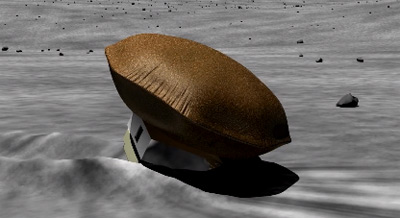日本立方星OMOTENASHI 是 JAXA 业余无线电俱乐部的一个项目,由美国宇航局 11 月 16 日发射的 Artemis 1 任务的第二有效载荷。它计划在月球表面着陆,并在业余 70 厘米波段发射信标。
控制人员报告说,OMOTENASHI 目前正在翻滚,这使得航天器很难给电池充电并很难与地面取得联系。控制人员正在继续尝试恢复。JAXA业余无线电俱乐部计划利用 OMOTENASHI 进行下列业余无线电任务:1.进行接收月球超微弱超高频信号的技术研究。2.开展推广活动,为世界各地的业余无线电操作员提供尝试接收月球信号的机会。
OMOTENASHI 是一颗 6U 立方体卫星,外部尺寸为 239 x 366 x 113mm毫米,质量约为 14 公斤。OMOTENASHI 由三个模块组成:轨道模块、反向马达模块和表面探测器。在月球转移轨道期间,这些模块是集成的。当 OMOTENASHI 到达月球时,表面探测器将分离并进行半硬着陆。如果重新获得控制,OMOTENASHI 将由超小型姿态控制系统主动控制,包括恒星跟踪器、太阳传感器、IMU、反作用轮和冷气喷射推进器。在月球转移轨道期间,由于严格的资源限制,OMOTENASHI 可能会自旋稳定。在轨道舱和表面探测器上都一个 1 瓦功率的超高频 CM/PSK/PM/PSK31信标。
调制:信标,PSK31同步字C1 (ASCII码)
调制:FM, PSK31, PCM-PSK/PM Sync Word C1 (ASCII code)



The satellites – called CubeSats – are roughly the size of a large shoe box and weigh no more than 30 pounds. Despite their small size, they enable science and technology experiments that may enhance our understanding of the deep space environment, expand our knowledge of the Moon, and demonstrate new technologies that could be used on future missions.
If successful, OMOTENASHI will be the smallest spacecraft ever to land on the lunar surface and will mark Japan as the fourth nation to successfully land a craft on the Moon.
OMOTENASHI (Outstanding MOon exploration Technologies demonstrated by NAno Semi-Hard Impactor) and ArgoMoon, which will both study the Moon, were integrated with their dispensers and installed on the Orion stage adapter along with seven other payloads for the Space Launch System (SLS) rocket’s first flight. A third payload, the BioSentinel CubeSat is the only CubeSat that will contain a biological experiment on Artemis I and will be the first CubeSat to support biological research in deep space. The team placed it in its dispenser for the flight, and to preserve its biological contents, it is being kept in a controlled environment at NASA’s Kennedy Space Center in Florida. At a date closer to launch, it will be placed in the Orion stage adapter.
OMOTENASHI was developed by the Japan Aerospace Exploration Agency (JAXA). While OMOTENASHI is one of several Artemis I secondary payloads that are studying the Moon, it is the only one that will conduct a controlled landing on the Moon’s surface. Its primary objective is to test the technologies and trajectory maneuvers that allow a small lander to land on the Moon while keeping its systems – including power, communication, and propulsion systems – intact. Testing these systems around and on the Moon can help with development of similar small landers that could explore other planets. The spacecraft will also measure the radiation environment beyond low-Earth orbit, providing data that will help develop technologies to manage radiation exposure for human exploration. If successful, OMOTENASHI will be the smallest spacecraft ever to land on the lunar surface and will mark Japan as the fourth nation to successfully land on the Moon.
 OMOTENASHI (Outstanding MOon exploration TEchnologies demonstrated by NAno Semi-Hard Impactor) demonstrate the technology for low-cost and very small spacecraft to land on the lunar surface. The CubeSat will also take measurements of the radiation environment near the moon as well as on the lunar surface.
OMOTENASHI also separated on November 16 (JST), but currently the CubeSat has not completed sun acquisition and communication is not stable. We are therefore continuing operations to stabilize attitude, secure power and establish communication.
OMOTENASHI (Outstanding MOon exploration TEchnologies demonstrated by NAno Semi-Hard Impactor) demonstrate the technology for low-cost and very small spacecraft to land on the lunar surface. The CubeSat will also take measurements of the radiation environment near the moon as well as on the lunar surface.
OMOTENASHI also separated on November 16 (JST), but currently the CubeSat has not completed sun acquisition and communication is not stable. We are therefore continuing operations to stabilize attitude, secure power and establish communication.




